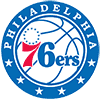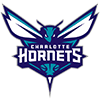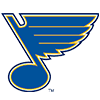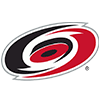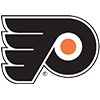FIVE BURNING QUESTIONS
1. So maybe Jaime Garcia IS this good?
In my last edition of the Pitcher Value Meter, which ranks starting pitchers for the coming week, I took a little heat for my relatively low placement of St. Louis' Jaime Garcia. I wrote the column just before Garcia went out and tossed a two-hit shutout against the Brewers, striking out eight and walking one. That's the sort of effort that catches my attention and results in Garcia moving up my rankings. So what about going forward?
A bit of background: Garcia was a legitimate NL ROY candidate in 2011, going 13-8 with a 2.70 ERA, 7.3 K/9 and 3.5 BB/9. The peripheral numbers didn't quite support a 2.70 ERA (3.62 xFIP), but it was still a strong rookie season for the young left-hander. I was counting on some regression from Garcia, who also has a Tommy John surgery under his belt and averages just 89.4 mph with his fastball. The bad stuff aside, Garcia has clearly taken a step forward this year. For me, seven starts is a big enough sample size to come to that conclusion. Comparing 2010 to 2011:
| 2010 | 2011 | |
| K/9 | 7.3 | 8.7 |
| BB/9 | 3.5 | 2.2 |
| GB% | 55.9 | 54.7 |
A healthy increase in strikeouts, a decrease in walks and a groundball rate that remains well above average. Garcia is also mixing in his changeup with increasing frequency (19.3 percent versus 13 percent in 2010), and it's a plus pitch for him. Batters are also
FIVE BURNING QUESTIONS
1. So maybe Jaime Garcia IS this good?
In my last edition of the Pitcher Value Meter, which ranks starting pitchers for the coming week, I took a little heat for my relatively low placement of St. Louis' Jaime Garcia. I wrote the column just before Garcia went out and tossed a two-hit shutout against the Brewers, striking out eight and walking one. That's the sort of effort that catches my attention and results in Garcia moving up my rankings. So what about going forward?
A bit of background: Garcia was a legitimate NL ROY candidate in 2011, going 13-8 with a 2.70 ERA, 7.3 K/9 and 3.5 BB/9. The peripheral numbers didn't quite support a 2.70 ERA (3.62 xFIP), but it was still a strong rookie season for the young left-hander. I was counting on some regression from Garcia, who also has a Tommy John surgery under his belt and averages just 89.4 mph with his fastball. The bad stuff aside, Garcia has clearly taken a step forward this year. For me, seven starts is a big enough sample size to come to that conclusion. Comparing 2010 to 2011:
| 2010 | 2011 | |
| K/9 | 7.3 | 8.7 |
| BB/9 | 3.5 | 2.2 |
| GB% | 55.9 | 54.7 |
A healthy increase in strikeouts, a decrease in walks and a groundball rate that remains well above average. Garcia is also mixing in his changeup with increasing frequency (19.3 percent versus 13 percent in 2010), and it's a plus pitch for him. Batters are also making less contact than last year, leading to the conclusion that he's commanding the ball well and getting good movement on his pitches. An interesting little stat that FanGraphs tracks is called "swinging strike %," a metric that measures the percentage of strikes that batters swing at and miss. Garcia's 13-percent rate leads the league, which is pretty impressive.
Bottom line: while Garcia is obviously not going to maintain a 1.99 ERA (.263 BABIP, 2.59 xFIP), but he still has room for growth, so that growth should help offset a handful of inevitable bad outings here and there. Look for Garcia to be ranked aggressively in the next Value Meter depending on matchups, but I'm buying in (finally).
2. It's just two starts, but has the real Homer Bailey arrived?
My memory is a bit sketchy here (I'm aging and in far too many leagues), but I'm pretty sure I tossed back a $3 Bailey in favor of keeping a similarly-priced Mike Leake in one of my leagues. Yes, I'm one of many who grew tired of waiting for Bailey's top prospect status to translate into big-league dominance.
It's been just two starts, but Bailey has looked spectacular, going 2-0 with a 0.69 ERA and 12:1 K:BB in 13 innings. Bailey's arm must be feeling good, as he's thrown his slider a whopping 29.8 percent of the time versus a pre-2011 mark of 9.9 percent, and his velocity has typically been in the 91-94 mph range with his fastball. Bailey seemingly has been around forever, but he just turned 25 last week, and while he's struggled with his health and inconsistency, he still has the sort of pedigree that leads us to think that a breakout is a real possibility.
Glowing reviews aside, I am obligated to point out that both of his 2011 starts have come against the Astros. They aren't a terrible offensive team (16th in team OBP, 19th in SLG), but they aren't exactly a reincarnation of the Killer B's. Bailey's next two starts are projected to come next week at home against the Cubs and on the road against the first-place (???) Indians, who are now apparently being managed by Lou Brown.
3. Does Velocity Matter?
Easy answer here is a resounding "yes." It's simple physics really – the faster the ball gets from the pitcher's hand to home plate, the less time the batter has to react and make good contact. It's not that simple, of course. Only four starters in baseball average more than Edinson Volquez's 93.9 mph average fastball, but Volquez has a 5.63 ERA because he can't find the strike zone with any sort of regularity. Control, command and secondary offerings play a huge part, in addition to pure "stuff," in a pitcher's effectiveness. That said, a significant drop in velocity is often a precursor to an underlying injury while a spike in velocity could represent improved mechanics, better conditioning or just normal growth. Let's look at a handful of starters who fall in both categories so far this year:
Numbers in parentheses are 2010 and 2011 average fastball velocity, respectively.
Clay Buchholz (94.1, 92.4) – There isn't really anything nice I can say here without reaching into the past when I was far more positive. The numbers aren't pretty – 5.4 K/9, 4.4 BB/9, loss of velocity, fewer ground balls, fewer swings and misses, etc. Go ahead and buy low if you want, but you may as well spend $20 on lottery tickets while you're at it.
Francisco Liriano (93.7, 92.1) – A 5.3 K/9, 6.8 BB/9 and a no-hitter. Tell me which one of these things is not like the others. What is eye-popping about Liriano is an incredibly-low 9.8-percent line-drive rate. That's a number that has hovered in the 19-percent range for Liriano in recent years, and it's really hard to explain. I don't see good things ahead for Liriano, but watch the velocity in his next couple starts for a clue.
Jeff Francis (87.2, 85.3) – From a soft-tosser to tossing underhand? The Rockies may have been better off drafting Cole Hamels when they selected Francis with the ninth pick in 2002.
Joe Saunders (90.5, 89.1) – Safe to say the league has caught up to this two-time 16-game winner. Tyler Skaggs is still the prize from the Dan Haren deal with the Angels.
Justin Masterson (92.1, 93.1) – A 2.5 BB/9 (versus 3.8 career) is really the key to Masterson's 2011 success, not the velocity bump (though that helps, sure). Masterson still supports severe platoon splits (LHB hitting .309 against him), so if he can develop an effective pitch against that group, the sky's the limit.
Madison Bumgarner (91.3, 92.6) – At 0-5, Bumgarner has been a huge disappointment for fantasy owners, but he'll probably recover. His groundball rate is up, and the truth lies somewhere in the middle in terms of his BB/9 rate – 3.5 this year, 2.1 in 2010.
Mat Latos (93.7, 91.9) – Spring shoulder woes can be blamed for velocity issues and a slow start, but keep in mind his innings counts the last three years: 56, 123, 184.1. Pretty big jumps in back-to-back years, and though he's a big guy who should be able to handle a lot of innings, I'm pretty concerned about his early-season struggles.
Tim Lincecum (91.3, 92.9) – A GB% that has risen from a pre-2011 mark of 47.3 percent to 55 percent this year, fewer walks AND he's recovered some of the velocity he lost since 2008? Sign me up for this bandwagon.
Ubaldo Jimenez (96.1, 92.3) – Jimenez was in the 92-94 range, touching 96 and even 97 on occasion in his last start against the Giants (6-2-1-1-5-7), so he'll probably be fine. Can't imagine you can buy low now.
Wade Davis (92.3, 90.2) – Despite the 3.07 ERA, it's starting to look like that seven-year deal for Davis might not have been a good idea. With a 5.23 xFIP, the regression guy is chasing Davis down and gaining ground rapidly. He's never been a huge strikeout machine in the first place, but a 4.1 K/9 this year is troubling. Factoring in he pitches in the AL East and allows his share of flyballs, I'm not relying on Davis to be much more than a back-of-the-rotation starter.
4. Bartolo Colon ... Whaaaat???
If you had to guess the top-five pitchers in the game in terms of strikeout-to-walk ratio, the first two names that should come to mind are Cliff Lee and Roy Halladay. Yep, both are there. It's also not surprising to see Dan Haren and Ricky Nolasco there as well, but the fifth name on this list is a shocker.
| NAME | K:BB |
| Cliff Lee | 8.6 |
| Roy Halladay | 7.3 |
| Dan Haren | 7.0 |
| Ricky Nolasco | 5.4 |
| Bartolo Colon | 5.3 |
Pretty amazing really given what Colon has done since stealing Johan Santana's Cy Young award in 2005:
| Year | Innings | ERA |
| 2006 | 56.1 | 5.11 |
| 2007 | 99.1 | 6.34 |
| 2008 | 39.0 | 3.92 |
| 2009 | 62.1 | 4.19 |
| 2010 | 0.0 | 0.00 |
That's an average of 51.4 innings with a 5.19 ERA. Crazy. Clearly this can't continue, as Colon is 38 later this month, still chunky, and we are talking about a small 37.1 innings sample size, but what is his baseline that we can expect this year? Colon's doing it with nearly all fastballs (his 86.2 fastball percentage leads MLB), but it's a fastball that's getting a ton of movement, and he's commanding it like he's Cliff Lee. Another plus is the difference in velocity on his pitches has improved:
| Year | FBv-SLv | FBv-CHv |
| 2008 | 7.0 | 7.9 |
| 2009 | 7.1 | 7.2 |
| 2011 | 9.1 | 9.5 |
(FBv=average fastball velocity, SLv=average slider velocity, and CHv=average changeup velocity.)
I don't have a study at my fingertips to confirm, but I'm theorizing here that the increased separation Colon is showing in 2011 has to be helping rather than hurting. Combine that with his surprising command and control and you have a pitcher who is the team's second-best starter. There's really no one I can recall to point to and say, "yep, this is a similar situation and this guy sustained his success all year long, so Colon can too." That said, if Colon can avoid serious injury, I've seen enough to think that he can maintain a sub-4.25 ERA with solid contributions in WHIP, strikeouts and likely wins.
5. Is Eduardo Sanchez now "the guy" in St. Louis?
Since we don't have an "official" guy still (thanks Tony), we're left to look at the data. The team's last 10 recorded saves break down as follows:
Sanchez: 3
Fernando Salas: 3
Mitchell Boggs: 3
Trever Miller: 1
Boggs' last save, though, came April 24, so we could probably eliminate him from top consideration. Miller is a lefty who could be spotted in certain closing situations, but outside of deep NL-only formats, he's not worth owning. To further muddy the waters, there are also three others who can't be completely eliminated:
Jason Motte – Just one earned run since April 6 covering 12 innings. Assumed at one point to be Ryan Franklin's heir apparent.
Miguel Batista – 41 career saves and a 0.60 ERA, but a 9:8 K:BB in 15 innings isn't what you want from your closer. Still, he can't completely be ruled out.
Ryan Franklin – OK, you can probably eliminate Franklin, who has allowed at least one run in eight of 10 appearances, but if he turns things around, Tony could go back to that well.
Bottom line: Slight edge still to Sanchez, who has been getting the saves recently and who also has "closer stuff" with that 13.5 K/9. He does have some control issues, however, walking 10 in 21 innings with nine of those walks coming in his last six innings. I'm guessing all seven of these guys are owned in 12-team NL-only leagues, but for those shallower leagues, Motte is the one to keep a close eye on, as he is owned in just 12 percent of Yahoo leagues.
Regan, a four-time Fantasy Sports Writers Association award winner, was named the 2010 Fantasy Baseball Writer of the Year.
Follow @vtadave on Twitter.









